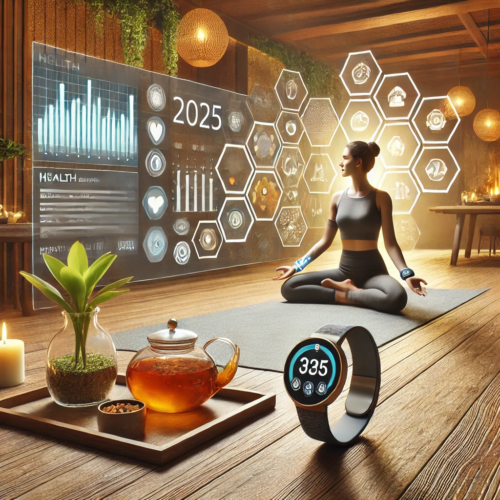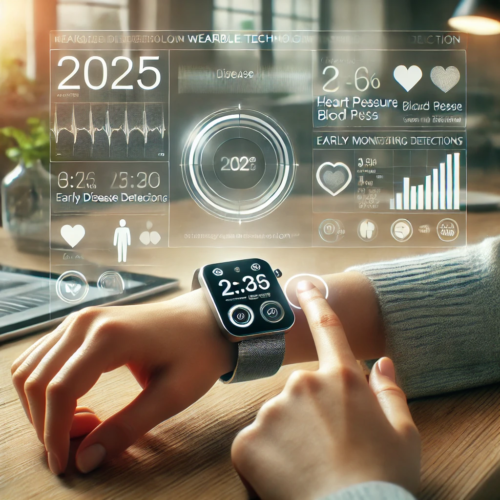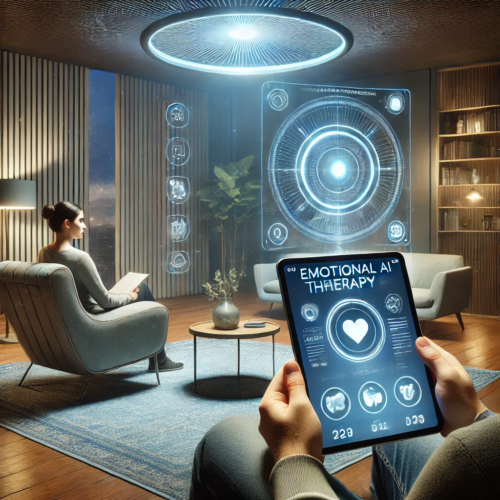“Telehealth 2.0: Personalized Remote Care—Using Wearable Sensors and AI for Continuous Patient Monitoring in 2025 to Revolutionize Healthcare Accessibility.” That’s a bit of a mouthful, right? But it captures the heartbeat of this evolving trend, one where cutting-edge technology meets patient-centered care. Telehealth is no longer just a video call with your physician—it has grown into a dynamic, AI-driven system that anticipates your health needs before you even realize them. And in 2025, the future looks bright, with governments, scientists, politicians, celebrities, older generations, and youth all weighing in on how to shape this new era of remote healthcare.
Telehealth 2.0—A Futuristic Leap Toward Personalized Remote Care
Welcome to the new frontier in health services. Telehealth 2.0 stands apart from the old, clunky model of telemedicine that once revolved around basic video consultations. Now, we’re witnessing a remarkable shift toward personalized remote care—where wearable sensors capture real-time data, AI algorithms predict medical risks, and patients gain control over their well-being from the comfort of their homes.
But this transformation doesn’t exist in a vacuum. Government bodies and policymakers are stepping in, influencing how these innovations roll out. Politicians are delivering passionate speeches—some accuse them of opportunism, others admire their drive. Meanwhile, scientists are forging ahead with new clinical trials. Even celebrities have jumped on board, championing telehealth platforms as the next big thing. In short, it’s a party, and everyone’s invited—though some question if we’re ready for the challenges that come with advanced remote patient monitoring. Let’s dig in.
The Essence of Telehealth 2.0—Why It Matters
If you’ve been reading the headlines or scanning LinkedIn posts, you’ve probably seen mentions of “Telemedicine 2.0” or “Remote Healthcare Renaissance.” According to Harvard’s Corporate Learning insights, the pandemic era acted as a catalyst, launching telehealth into the mainstream. Yet, in 2025, Telehealth 2.0 isn’t just about convenience; it’s about personalization and proactive medicine:
- Wearable Sensors: Imagine a tiny patch that tracks your heart rate and glucose levels round the clock—feeding that data to your healthcare provider in real time.
- AI-Driven Insights: Sophisticated machine learning models (that’s a fancy way of saying “smart software”) crunch your numbers and send alerts when they detect anomalies, long before you notice symptoms.
- Continuous Monitoring: No more waiting months for your next check-up. Your body’s status is monitored on a near-constant basis, reducing hospital visits and improving outcomes for chronic conditions.
According to the Mayo Clinic, this approach strengthens patient engagement, empowers preventive healthcare, and promises cost savings for health systems globally. If that’s not revolutionary, I don’t know what is.
Government Notes—Funding, Regulatory Frameworks, and Public Trust
Over the past three years, governments around the world have poured billions into telehealth initiatives. Some may say it’s about time. People in rural or underserved areas—where a doctor’s appointment used to require an entire day’s travel—stand to benefit immensely from these digital solutions. But alongside the excitement, there’s a swirl of regulations.
Funding and National Strategies
- Many governments now subsidize the purchase of wearable devices for at-risk populations, such as seniors or those with chronic conditions like diabetes and hypertension.
- The push for universal broadband has become even more pressing, ensuring no patient is left out due to poor internet connectivity.
- Pilot programs abound; for example, certain European nations are partnering with private tech giants to test “telehealth districts,” where remote monitoring is offered as a standard option.
Policy and Political Tussles
It’s not all kumbaya in the halls of power. Political debates often rage about data privacy, the cost burden on public health systems, and how to ensure fair access. Some critics argue that insurance reimbursements for telehealth remain murky, leading to confusion among healthcare providers. Meanwhile, the data-protection hawks caution against “Big Brother medicine.” They worry that these wearables might gather sensitive health metrics—like stress levels or emotional states—that could be misused by marketers, or worse, insurance companies.
An uneasy truce typically forms around the idea that telehealth is unstoppable and beneficial. Still, the friction stands as a reminder that big leaps in healthcare innovation require robust debate. If you’d like more insight into the policy side, this LinkedIn article on Telemedicine 2.0 examines the legislative angle on remote healthcare’s rapid expansion.
Political News—Promises, Controversies, and Social Impact
The political stage in 2025 is ablaze with leaders touting telehealth as the next big solution to national healthcare woes. Campaign speeches echo lines like, “We’ll revolutionize your medical experience—no more crowded hospital waiting rooms!” That’s a powerful pitch, especially for older citizens tired of dealing with labyrinthine health systems.
The Great Debate
But controversies arise. Some politicians claim telehealth is “elitist,” pointing out that it often hinges on pricey wearables and stable internet access. This fosters concerns about deepening the digital divide. Grassroots organizations argue for expanded public funding, ensuring every citizen has a shot at fully benefiting from remote medicine.
On the other hand, multiple politicians have partnered with philanthropic foundations to donate devices to low-income communities. The philanthropic wave has generated headlines—some call it a genuine attempt at healthcare equality, others see it as PR stunts. Only time will tell if these measures truly level the playing field.
Research Labs and Scientists—Behind the Scenes of Telehealth Innovation
Step inside a bustling research lab at 3 a.m. You’ll find coffee-fueled scientists hunched over monitors, analyzing streams of patient data from wearable devices. Places like the MIT Media Lab or dedicated telehealth centers at major universities have become ground zero for advanced remote-care technology. These folks aim to design devices that are both accurate and comfortable to wear daily—no more bulky heart monitors strapped to your chest.
- AI Algorithms: Researchers tirelessly refine deep learning models so they can predict strokes or heart attacks days before they might occur.
- Data Security Protocols: Labs collaborate with cybersecurity experts to make sure patient information remains locked down. They experiment with blockchain-based solutions to manage medical records.
- Human-Centered Design: Scientists consult with patients and doctors to refine wearable prototypes, ensuring they’re easy to use and seamlessly integrate into daily life.
According to Nasdaq’s coverage on telehealth 2.0, remote patient monitoring tools are “set to give a shot in the arm” to telehealth services. This synergy between academia and industry spawns new medical devices monthly, all chasing that holy grail: better prevention, earlier diagnosis, and fewer hospital stays.
Celebrity Spotlights—Why the Stars Love Telehealth
You might wonder, how does a Hollywood A-lister factor into wearable sensors? Celebrity endorsements have always been a catalyst for mainstream acceptance. A few big names have publicly shared their experiences with remote healthcare:
- A famous pop singer confessed on social media: “Wearing a tiny heart-rate tracker gave me peace of mind on tour. My doctor caught early signs of exhaustion!”
- A beloved actor recounted a harrowing story of discovering dangerously high blood pressure while on set, thanks to AI-enabled monitoring alerts.
Their stories go viral, fueling public interest and discussions about telehealth’s real-world benefits. Some cynics roll their eyes, suspecting brand deals or sponsored posts. Still, the star factor undeniably draws attention to remote medical services, encouraging fans to explore the possibilities.
Older Generations—Reflections, Hope, and Skepticism
Picture an 80-year-old retiree living in a remote area with limited hospital access. For them, Telehealth 2.0 might be a godsend—offering immediate access to professional care without traveling miles. Indeed, older folks often champion these technologies once they see how easy it can be to check vitals or receive medication reminders via smartphone apps.
Yet, there’s a learning curve. Grandpa might struggle to figure out the complicated interface or be nervous about data breaches. One elderly woman I spoke to said, “I love knowing my heart data goes straight to my doctor, but I hate feeling tethered to a device all day.” That tension between independence and constant monitoring underscores the complexities of remote care for seniors.
Social aspects also come into play. Many older adults appreciate not being whisked away to assisted living facilities prematurely. They can stay at home longer, confident that 24/7 monitoring has their back. On the flip side, some seniors simply don’t trust these “futuristic contraptions,” citing concerns about mechanical errors or the reliability of AI insights.
The Youth Perspective—Championing Equitable Telehealth
Move over, Grandma: the younger crowd has a loud voice in this conversation too. Teens and twenty-somethings, so-called “digital natives,” often adapt quickly to new tech. They wear sleek watches that monitor everything from steps to oxygen saturation. They track wellness metrics on trendy apps and share their achievements on social media.
Interestingly, many young activists in 2025 are calling for equitable telehealth. They push for policy reforms that would require free or low-cost wearable devices for low-income communities, bridging the digital and healthcare gap. College students hold hackathons, aiming to develop open-source telehealth tools that can be mass-distributed to areas without robust healthcare infrastructure. It’s not all altruism—some see it as an entrepreneurial opportunity, envisioning big profits from telehealth startups.
And yes, the youth demand that these systems respect personal data. Privacy matters to them, too. They organize online petitions and real-world protests, ensuring that telehealth expansions don’t morph into a corporate data goldmine. Their stance? Embrace technology but keep it fair and transparent.
A Typical 2025 Telehealth Journey—What It Might Look Like
Let’s break it down with a quick hypothetical example.
- Morning Metrics: You wake up. Your wrist wearable pings an AI-based app that gently suggests you drink more water. Your heart rate variability indicates mild dehydration.
- Blood Pressure Check: The sensor in your smartwatch quietly checks your blood pressure twice a day, sending data to a secure portal your nurse can access anytime.
- Nudges for Movement: The AI notices you’ve been sitting too long. It politely encourages you to walk around for five minutes, preventing sedentary habits.
- Chat with the Doc: A scheduled video call for midday if your stats show irregular patterns—maybe your blood glucose spikes or you’re showing signs of stress.
- Medication Reminders: If you’re on medication, the device alerts you when it’s time to take another dose. No more rummaging through pillboxes with uncertainty.
- End-of-Day Summary: At night, the app provides an overview—calorie intake, steps, sleep quality, and any major fluctuations. It also logs suggestions for improving your next day.
That’s Telehealth 2.0 in practice—seamless, proactive, and arguably more intimate than conventional hospital-based care.
The Crisscross of Politics, Funding, and Public Demand
Despite the wonders of Telehealth 2.0, controversies remain. Political news channels churn out debates over how reimbursements for telehealth are handled. Some states or countries hesitate to pay doctors the same rate for virtual visits as for in-person consultations, fueling disputes between healthcare providers and insurers. Meanwhile, the general public continues clamoring for convenient, on-demand care—especially after seeing how swiftly telehealth addresses minor but pressing health concerns.
Governments are forced to respond. Many are crafting guidelines that require insurance providers to treat telehealth visits on par with traditional appointments. Others are investing in public awareness campaigns so older or technologically uneasy populations can gradually embrace these solutions. For more details on how corporate interests mingle with political policy, you might find this Nasdaq article enlightening. It delves into how remote patient monitoring systems boost both cost-effectiveness and patient satisfaction.
Emerging Trends in Telehealth 2.0—What’s Next?
Right now, wearable patches, rings, and watches hog the spotlight, but that’s just the tip of the iceberg. Researchers explore advanced sensor technology—maybe in your contact lenses, measuring tears for early disease markers. Or micro-sensors that live under the skin, fueling truly continuous monitoring. Some labs are even tinkering with smart clothing that tracks posture and muscle tension to prevent injuries.
Additionally, AI’s role is set to expand. Predictive analytics for mental health conditions, like predicting bouts of anxiety or depression, might become mainstream. The interplay between body data and environmental factors—sleep patterns, local pollution levels, stress from your job—could yield insights that transform healthcare into a genuinely holistic experience.
Social and Ethical Quirks
While the potential is vast, telehealth’s deeper questions occasionally surface. Are we turning health into a data commodity, vulnerable to exploitation by businesses or political forces? Might we be losing the human touch in medicine, replaced by blinking screens and text alerts?
There’s also the subtle fear that continuous monitoring might prompt hyper-vigilance. If your wearable overreacts to every minute fluctuation, you could become anxious about your health. A slight spike in your heart rate might send you into panic mode—“Is something wrong?!” That mental toll shouldn’t be overlooked.
Some studies raise concerns about false positives or tech glitches that lead to expensive, unnecessary medical tests. Yet, many experts argue these downsides can be mitigated with robust AI algorithms that carefully distinguish true anomalies from minor fluctuations.
A Quirky Shift in Tone—Little Stumbles and Odd Transitions
Now, imagine your telehealth wearable beeping at the exact moment you step on stage to deliver a speech. That might disrupt your flow. Or maybe the AI gets confused, sending alerts about possible “emotional stress” when you’re actually just thrilled about a big sports win. Small slip-ups can happen. They’re akin to comedic stumbles on our journey toward streamlined healthcare.
We talk about the potential for mass personalization, yet some folks remain suspicious: “Is my data safe? Who’s watching my vitals?” Contradictory thoughts swirl—we crave the freedom of remote medicine, but we worry about the trade-offs in privacy. The tension is real.
And that’s okay. We’re forging new territory here, and friction often sparks innovation.
Intergenerational Perspectives—Community and Family Ties
During a family gathering, you might see Grandpa peering at his new heart-monitoring watch, your teenage cousin flipping through an AI wellness app on her phone, and your 40-something aunt discussing her upcoming virtual cardiology follow-up. The discussion inevitably meanders toward trust, cost, and excitement:
- Grandpa’s angle: He feels safer under continuous surveillance but also a bit uneasy about the “big data” aspect.
- Teens’ angle: They’re all in, designing new ways to track well-being, though they worry about security holes in these apps.
- Middle-agers’ angle: They love how it saves time, but they need clarity on whether insurance fully covers it.
This cross-generational chat reveals something crucial: Telehealth 2.0 doesn’t segment neatly into “fans” and “skeptics.” Everyone interprets it differently, weaving personal experiences into their stance.
Conclusion—Embracing Telehealth 2.0 with Care, Curiosity, and Caution
By now, you see how Telehealth 2.0: Personalized Remote Care stands poised to transform the healthcare landscape well beyond 2025. Wearable sensors, AI-driven insights, continuous patient monitoring—these innovations promise to reshape how we manage diseases, maintain health, and expand access to medical services worldwide.
But the journey demands more than just technology. It calls for thoughtful legislation, a balanced approach to data privacy, and equitable distribution of resources. Politicians need to deliver on their pledges, scientists must refine their solutions, celebrities can keep the spotlight glowing, and communities must remain open-minded.
Healthcare’s future looks bright, but not without speed bumps—and maybe a few comedic stumbles as your watch pings you at inopportune times. Still, these challenges feel minor in the face of the potential leaps forward. If we get it right, Telehealth 2.0 might truly unify convenience, cost-effectiveness, and compassionate care in a single, powerful package.
FAQs
Q1: Is Telehealth 2.0 covered by insurance?
Coverage often depends on regional policies and insurance providers. Many governments are pushing for equal reimbursement for telehealth visits, but specifics vary by location.
Q2: What if I’m not tech-savvy?
Most telehealth providers and wearable manufacturers offer user-friendly tutorials, and many seniors find it easier than they’d initially feared. Community centers often run free workshops to help people get started.
Q3: Are these wearables and AI insights reliable?
While no technology is flawless, most solutions in the market undergo rigorous testing. Research labs constantly refine algorithms to minimize false positives and protect data integrity.
Q4: Will Telehealth 2.0 replace traditional in-person visits entirely?
Unlikely. Physical exams and face-to-face consultations remain crucial. Telehealth 2.0 is a complementary tool, not a complete substitute.
Q5: Is my private health data at risk?
Security is a top priority for healthcare providers. Encryption, multi-factor authentication, and emerging blockchain solutions help protect sensitive data, though no system is 100% hack-proof.
External Link
For additional insights, visit the Mayo Clinic’s Telehealth resource and Harvard’s Corporate Learning portal for in-depth research on remote patient monitoring.




